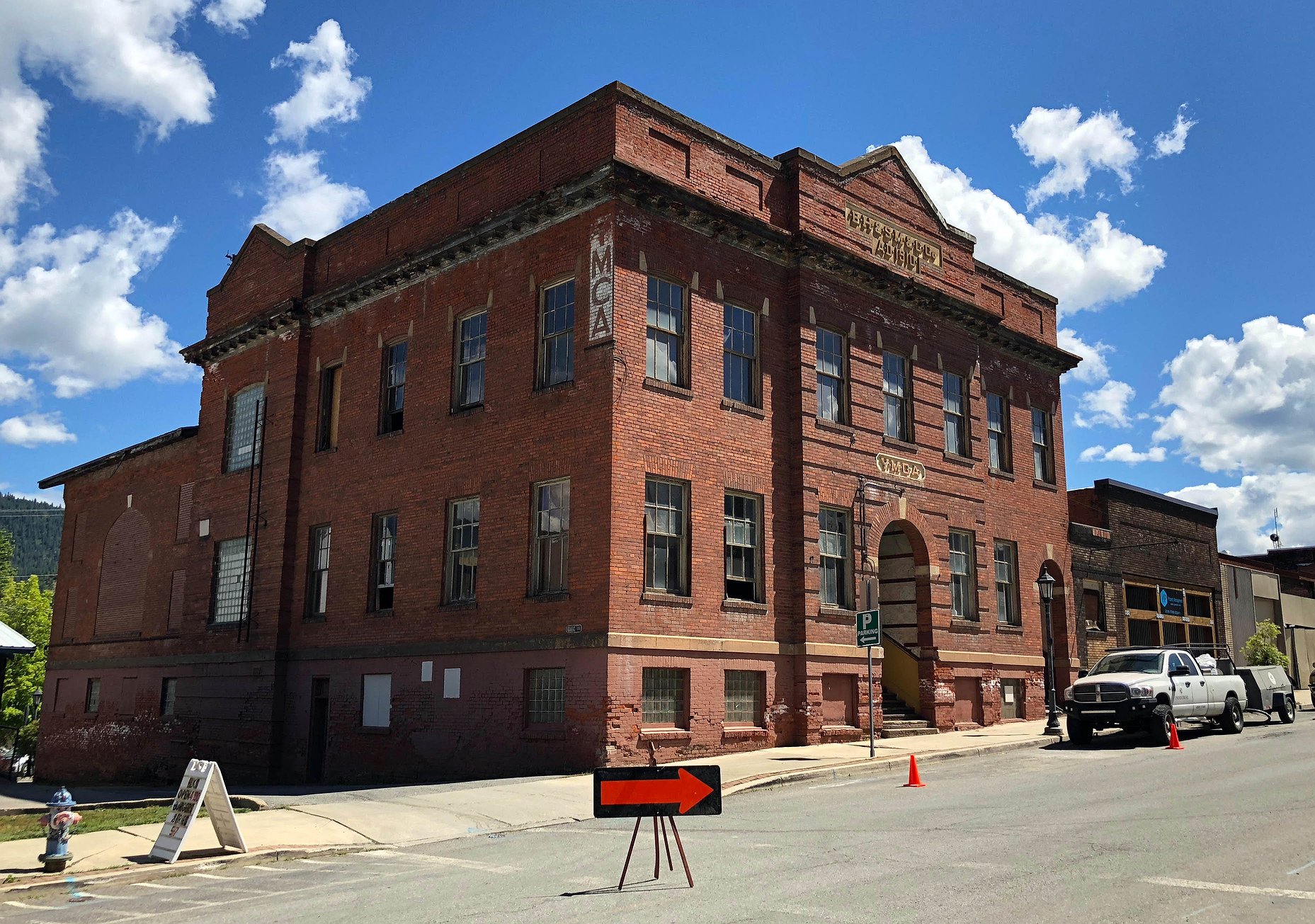Kellogg YMCA building not salvageable
CAROLYN BOSTICK | Hagadone News Network | UPDATED 10 months, 3 weeks AGO
Carolyn Bostick has worked for the Coeur d’Alene Press since June 2023. She covers Shoshone County and Coeur d'Alene. Carolyn previously worked in Utica, New York at the Observer-Dispatch for almost seven years before briefly working at The Inquirer and Mirror in Nantucket, Massachusetts. Since she moved to the Pacific Northwest from upstate New York in 2021, she's performed with the Spokane Shakespeare Society for three summers. | June 28, 2024 1:05 AM
KELLOGG — The YMCA building on McKinley Avenue holds a special place in local history for many, but after a lack of use and degrading conditions, the Department of Environmental Quality and the Silver Valley Economic Development Corp. believe the structure has reached the end of its life.
“That structure is one windstorm away from imploding on itself,” SVEDC Executive Director Paige Olsen said during a recent SVEDC meeting.
Olsen said in a phone interview that although there is a chance the building could be saved, after conversations with DEQ, tearing down the building is likely the safest and least costly option.
“The building isn’t salvageable unless there’s an angel donor. Right now, it’s only worth the ground it sits on, which is negative $10 million. That’s what it would cost to do something with the building,” Olsen said.
In recent years, the structure had been sold to a few investment groups but remained largely unused, causing it to fall further into disrepair. DEQ surveyed the site last year.
“It obviously has huge historical significance for the area,” Olsen said.
The SVEDC has worked to intervene on similar projects like Wallace’s civic auditorium. The auditorium was designed as a place for Wallace residents to congregate and phase two of the assessment with DEQ is underway in a parallel project to the one beginning at the former YMCA building.
Olsen plans to approach the county to present a course of action to turn the Kellogg landmark into a community asset that can once again have fond memories for Silver Valley residents.
“Doing something with it is better than the alternative,” Olsen said. “We can use those federal monies to come in and demolish the building.”
The structure is missing roof and was gutted, but currently, there is a brownfields contract with DEQ as the structure and site are assessed.
DEQ brownfields analyst Steve Gill said with the handover of the building from owner to owner, the former YMCA has "had starts and fits” as entrepreneurs attempted to get projects going over the years, to no success.
“We're really in a wait-and-see mode at this time,” Gill said.
He said the plan is to use federal funding for a more scientific and intensive cost analysis, usually taking about 30 days. An EPA assessment could then take place in September.
“That's the next step we’ll be taking and that will probably occur this fall. We'd have an idea of cost and how to go forward with it,” Gill said.
MORE FRONT-PAGE-SLIDER STORIES
ARTICLES BY CAROLYN BOSTICK

Hayden hosts Arbor Day festival
The City of Hayden holds its festival for Arbor Day a few weeks after the nationally recognized holiday and for 23 years, the celebration gets bigger among local schools. Mayor Alan Davis declared in a proclamation Thursday that “May 15 is Arbor Day in the City of Hayden.”

Celebrating 40 years of friendships at Coeur d'Alene's Specialized Needs Recreation
Tanja Batchelder met new people, shaking hands and exchanging smiles before she got back to her work on the loom. Batchelder said it takes weeks to complete a table runner on the loom, but the work kept her hands busy as she smiled at the hubbub of the celebration and open house taking place around her at Specialized Needs Recreation. "I love SNR and meeting new friends and spending time with them," Batchelder said. "There are baby chicks here, too."

Students get agricultural education at Farm to Table event
A bushel of wheat has about one million wheat kernels and weighs 60 pounds. One bushel of wheat will yield about 42 pounds of white flour which can then be used to make 62-70 loaves of bread or 42 pounds of pasta. After getting some background on wheat in the grain building at Farm to Table Wednesday, student Ethan Barney had one goal: grind as much of the kernels as he could before the time was up.





